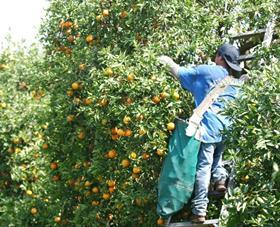
When Donald Trump took up his seat at the Oval Office’s ‘Resolute Desk’ in January 2017, the rural and farming community in America felt they had a man who understood their needs. Seen across the States as a dealmaker and business friendly, agricultural firms could look forward to a better trading climate, and lower taxes.
A year later, one of those assumptions has proved correct. The administration’s new tax regime, ratified in December 2017, slashed corporate tax from 35 to 21 per cent, described by the President as “a bill for the middle class and a bill for jobs”.
Yet his determination to break from the international trading status quo has created market instabilities, leaving many in the agricultural sector frustrated after an estimated 75 per cent of agriculture voted for Trump. The issue of a US-China trade war and subsequent tarfiffs has not made life easy.
Tim Mansfield, of Sun Orchard Apples, said the worst hit by the tariffs in the apple industry will be in Washington State, whose apples go straight to China from the west coast. “It doesn’t affect us, as we don’t directly export to Asia, but if they are losing a market it’s going to force new fruit to a market where we are. You don’t feel things in the market straight away, but eventually it will start showing up.
“It may have changed in Washington State, where they send fruit to Mexico and Asia. I would think certainly they might have changed their minds on Trump, as we lose markets as a whole.”
One of America’s biggest agricultural exports, pistachios, was also hit by the tariffs. The American Pistachio Growers trade body was more blunt in their assessment of the deal. Executive director of the group, Richard Matoian, says: “American Pistachio Growers supports an end to the tariff issue between the US and China, and urges both countries to come together and work out an amicable solution that will allow trade to continue and both economies to prosper.
“China is an important export destination for American-grown pistachios, and lack of resolution of this issue could hurt both American growers and Chinese consumers alike.”
Nearer to home, Stanley Phillips, USDA counselor for agricultural affairs in the UK, says his agency has been engaged in working groups with the UK ahead of Brexit’s March 2019 deadline to formulate technical and food standards between the US and UK that could make trade negotiations easier following withdrawal.
“The US is the largest bilateral trading partner with the UK. The UK is our largest market in the EU. We have trade and investment working groups and there have been a number of sessions working on issues that would be great to iron out before the UK leaves,” Phillips says.
“Ideally we would have something in play to take the place of current standards so that US and UK trade can continue along without disruption after Brexit.”
If free-trade agreements are struck between the US and UK, as Trump said would happen, American agriculture will be hoping to build on strong recent growth for fresh vegetable exports to the UK. It was a record year in 2016, with $84.5 million worth of vegetables exported to the UK, the vast majority of which were sweet potatoes. Onion exports have also shot up, growing from $11,000 in 2015 to $6m last year.
Tree nuts now dominate fresh produce exports to the UK, nearly doubling in value since 2011 to a record $211.8m in 2017, driven by almonds, pecans, walnuts and pistachios. “UK consumption of American pistachios continues apace. American in-shell pistachios have a SOM (Share of Market) of some 68 per cent with imports increasing in 2017 by 74 per cent year on year,” adds Matoian.
For now though, the two countries remain on the fence about the future, with such a paucity of information on the direction of Brexit. As Phillips says, trading within the special relationship “all depends on how much room Britain has to manoeuvre after Brexit.”



